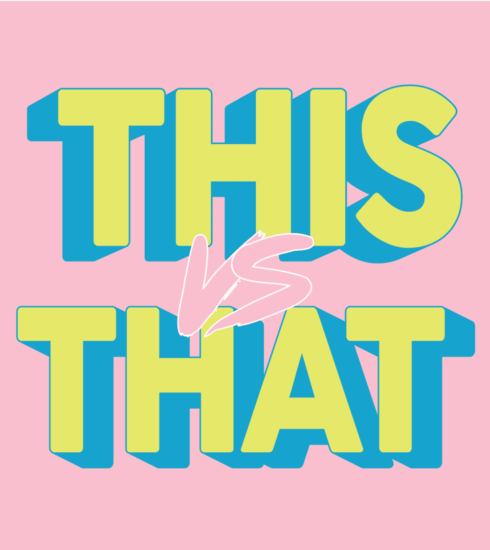This vs That – Issue 14
This
The year is 2021, half the globe hasn’t been outside their room in 12 months and showers have become optional. I mean they always were optional, but shower frequency has certainly seen a dip. Smelly people no longer go out – they either can’t or they’ve forgotten how to. Passion for the real world has been lost and so they elect to live their lives via the virtual landscape of internet fuckery.
Thirty-year-old men lose themselves in Runescape, teenagers lip sync for 30 seconds to 300 thousand people, and Tiffany updates her coffee memes album on Facebook, God bless you Tiffany. Of course, at the heart of this virtual addiction lives social media, a warped collage of abs and kittens and kittens with rippling abs. It is the umbilical cord that connects all of us to the best and worst of society. And just as it can inflate egos with a masterfully edited body shot or a fraudulent photo op by a pink Rolls-Royce, it can do real good.
Where else are you going to create a movement? Social media is the glue that holds together communities of passionate, hardworking activists hunting sustainable change. It connects people from all over the world to unite. For every failed flash mob event on Facebook there are a dozen others created for peaceful protests.
Instagram is a constant information overload. Not only do I not want to see what kind of undies my local halfback wears, I also don’t want to see the same purple clouds copied and pasted 43 times on a Tuesday. But that same bombardment of stories can be weaponised to educate. The scope is infinitely wider for messages to reach the masses.
Social media might be diluting what traditional activism once was, but at least it’s lowered the barrier for participation. Anyone can share a post. And I get that giving a fuck might seem fake online when it’s plopped between your flat white and a vintage giveaway, but at least it’s something.
THAT
There’s an increasingly dwindling number of us who remember the real struggles on social media of having to choose an “other half”, or waiting 15 minutes for your YouTube video to load. Times were simple.
Then something happened. Overnight, the Gen Z’s of the world got their modern Hitler. Schools, towns and social media (SM) became plastered with red and blue posters all to try and stop one, evil man: Kony.
Really, we had no idea of what we were doing; we just knew we had to spread the word and make sure everyone knew about Kony and if you didn’t share it you were just as bad. To be fair, we probably did nothing, but this became the catalyst for seeing how quickly social injustice could spread across the world and get real issues out there. Except just like the Garden of Eden, we needed more.
We live in a “keep up or get left behind” mindset and consequently, SM is becoming more accessible to everyone. This isn’t necessarily a bad thing and SM has a place for us to communicate, share and stay updated. But the problem with this is that when you give your seventy-year-old Pākehā grandad a Facebook account, you unleash that fossil’s prehistoric views on everything old and white. Yes, there’ll be a lot of people who will disagree, but there’ll also be a klan ready to eat that shit up.
You see, with everyone having a platform to complain about anything, we’ve ended up in a world where people can speak on any of the issues that they believe in, right or wrong. Or a world of cancel culture, where a toy potato takes precedence over actual monstrosities of the world – if you thought Kony was bad, just imagine if indigenous genocide was talked about.
This is where SM will always lose. Showing up with a flag or a sign, you can only stand in your truth. When you type a post on FB from your couch, you have everywhere to hide.
But hey, we’re all doing our part where it matters, you did like AND share, right?



